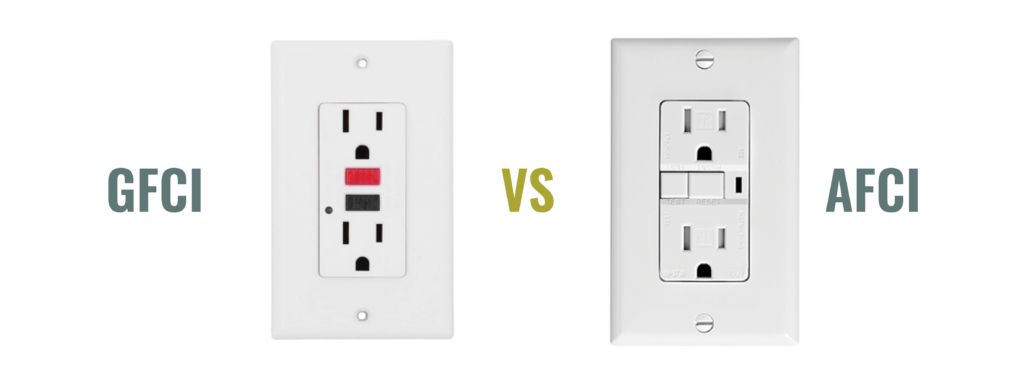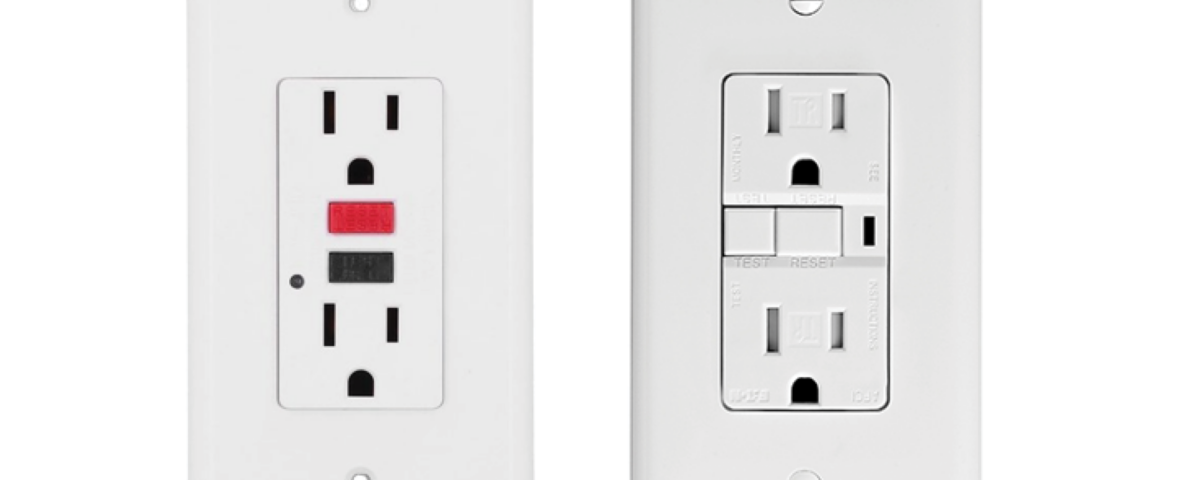 Confused between GFCI and AFCI? Don’t worry, we assure you it will be easy to understand. Before going into what these interrupters do, let’s understand what ground fault and arc fault mean.
Confused between GFCI and AFCI? Don’t worry, we assure you it will be easy to understand. Before going into what these interrupters do, let’s understand what ground fault and arc fault mean.
When a current accidentally follows a grounded surface back to the source of the electricity, which is also known as a leakage current, then it results in a ground fault condition. Suppose a toaster’s metal exterior were to become energized, for instance, and someone touched it. In that case, they might become the path for the unintended fault current and risk receiving a lethal electrical shock. People who are in areas where there is potential leakage currents from powered equipment and appliances are protected from major electrical shock injuries by GFCI protection. These include damp areas like bathrooms, kitchens, and outdoor spaces, as well as areas where frayed or broken electrical wire may be present. The NEC identifies specific locations required for residential and commercial occupancies.
A dangerous, unintended arc fault condition might develop at unsecured electrical terminations and connections, broken electrical wiring, or flexible cords. A simple job like hanging a photo frame in the bedroom could damage the interior wall, which could lead to dangerous arcing or sparking high temperatures that could quickly ignite combustible objects. Wear and tear on flexible cords, deterioration of cable, and cord protective insulation from sunshine or extreme heat are two other prevalent causes of arc faults. Currently the NEC only requires AFCI protection in residential occupancies only.
How do these interrupters work?
When an electrical current to ground exceeds specific thresholds, a ground fault circuit interrupter (GFCI) will shut off the electricity in a very short amount of time, protecting people from lethal electrical shocks. These devices are made to disrupt the flow of electricity if the leakage current to the ground exceeds 6 milliamps. The human heart can be stopped with as little as 7mA across it.
Arc Fault Circuit Interrupters (AFCI) devices prevent fires by continuously monitoring the electrical current in a circuit, analyzing the waveform for undesirable arcing signatures, and de-energizing the power when unsafe arcing signatures are found. The detection algorithms continuously evolve to differentiate between arcing signatures frequently present in all electrical circuits (think motors) and an actual dangerous arcing fault.
In summary, GFCIs is intended to protect human life from shock hazards, while AFCIs are intended to protect against fire and physical damage. Circuits can both be GFCI and AFCI protected.
Please feel free to contact 2RW if there are questions and stay safe.





